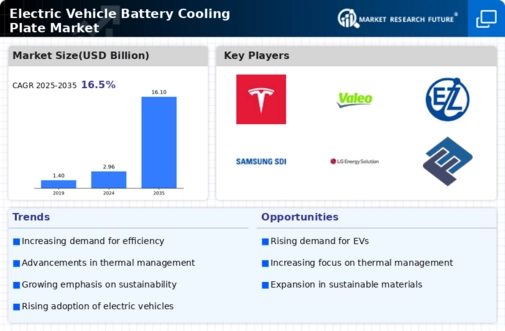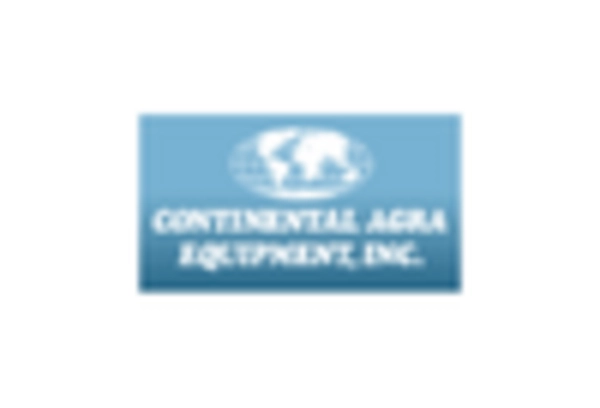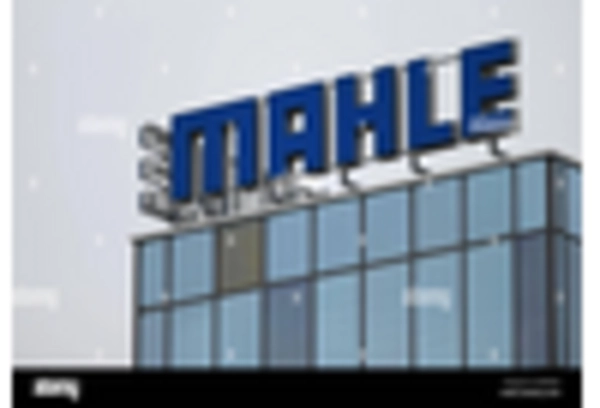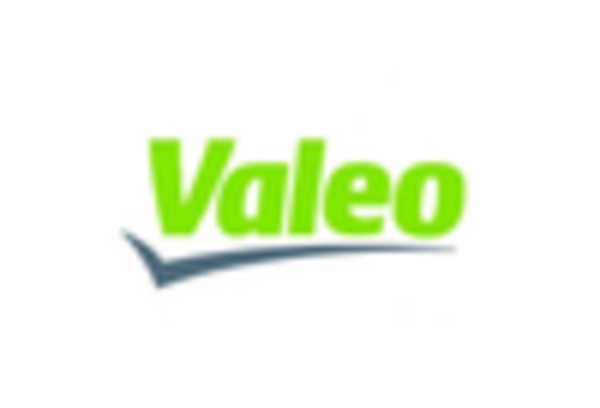Increased Focus on Battery Safety
The emphasis on battery safety is becoming increasingly critical in the Electric Vehicle Battery Cooling Plate Market. As electric vehicles become more prevalent, concerns regarding battery fires and thermal runaway incidents have prompted manufacturers to prioritize safety features in battery design. Effective cooling systems are essential to mitigate these risks, leading to a heightened demand for advanced cooling plates. The market is likely to expand as companies invest in safety-enhancing technologies, ensuring that their products not only perform well but also adhere to safety regulations. This focus on safety is a vital driver for the Electric Vehicle Battery Cooling Plate Market, influencing design and manufacturing processes.
Rising Demand for Electric Vehicles
The increasing adoption of electric vehicles (EVs) is a primary driver for the Electric Vehicle Battery Cooling Plate Market. As consumers and manufacturers alike prioritize sustainability and reduced carbon footprints, the demand for EVs has surged. According to recent data, the sales of electric vehicles have seen a compound annual growth rate (CAGR) of over 20% in the last few years. This trend necessitates efficient battery cooling solutions to enhance performance and longevity, thereby propelling the market for cooling plates. The Electric Vehicle Battery Cooling Plate Market is expected to benefit from this growing demand, as manufacturers seek innovative cooling technologies to meet the needs of high-performance EV batteries.
Growing Investment in EV Infrastructure
The expansion of electric vehicle infrastructure is a crucial driver for the Electric Vehicle Battery Cooling Plate Market. As charging stations and support facilities proliferate, the need for efficient battery management systems becomes more pronounced. This infrastructure development encourages the adoption of electric vehicles, which in turn drives demand for advanced battery cooling solutions. Investments in charging networks and battery swapping stations are expected to create a robust ecosystem for electric mobility, further stimulating the Electric Vehicle Battery Cooling Plate Market. The interplay between infrastructure growth and battery technology advancements is likely to shape the future landscape of the market.
Regulatory Support for Electric Mobility
Government regulations promoting electric mobility are a significant driver for the Electric Vehicle Battery Cooling Plate Market. Many countries have implemented stringent emissions standards and incentives for electric vehicle adoption, which in turn boosts the demand for efficient battery cooling solutions. For instance, various regions have set ambitious targets for phasing out internal combustion engines, thereby accelerating the transition to electric vehicles. This regulatory environment creates a favorable landscape for the Electric Vehicle Battery Cooling Plate Market, as manufacturers are compelled to develop advanced cooling technologies to comply with new standards and meet consumer expectations for performance and safety.
Technological Innovations in Battery Design
Technological advancements in battery design are significantly influencing the Electric Vehicle Battery Cooling Plate Market. Innovations such as solid-state batteries and improved lithium-ion technologies require advanced cooling solutions to maintain optimal operating temperatures. As battery capacities increase, the heat generated during operation also rises, necessitating effective thermal management systems. The market is projected to grow as manufacturers invest in research and development to create more efficient cooling plates that can handle the demands of next-generation batteries. This focus on innovation not only enhances battery performance but also extends the lifespan of EV batteries, making it a crucial driver for the Electric Vehicle Battery Cooling Plate Market.


















Leave a Comment